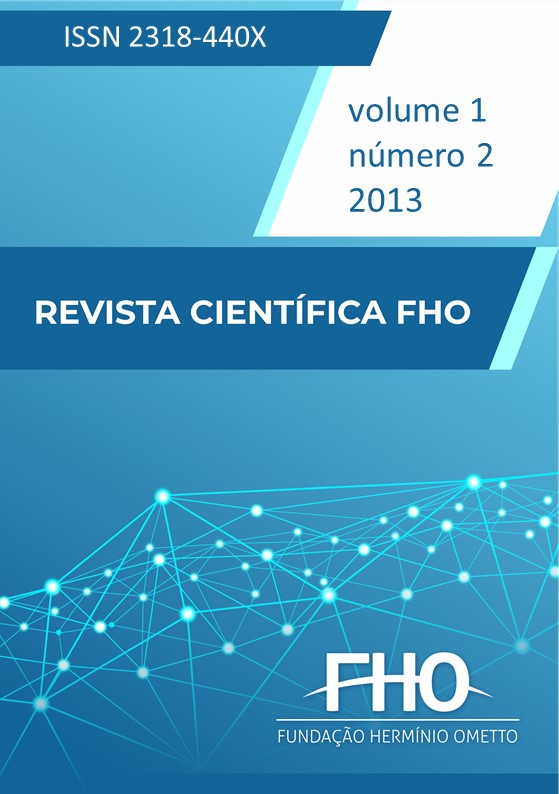Abstract
Excessive exposure without protection from UV radiation is one of the main risk factors of skin carcinogenesis, it has been a serious public health problem due to its higher incidence from the twentieth century. The aim of this study was to evaluate the degree of knowledge of street workers about the risk factors of skin carcinogenesis and compare them to the habits of photoprotection as well as educate them on the importance of photoprotection against the risks daily. For that were applied multiple choice questionnaires to 400 street workers in various sectors of the cities of Araras and Rio Claro (SP) from 18 to 55 years of age. Overall, 92% of respondents believe that ultraviolet radiation is one of the main risk factors of skin cancer and 63% consider tanned skin as synonymous with risk, but the use of sunscreen was only 58% of respondents, and daily use in only 26% of street workers. Furthermore, only 45.5% of respondents applying daily sunscreen reapply the same, within about an hour. Regarding the concomitant use of sunscreen with other means of protection, 68% of respondents use caps and 32% wear clothes as physical means of protection. We conclude that the incorrect use of the means of photoprotection, the level of awareness was low, because even companies offering individuals the sunscreen, most used incorrectly, thus suggesting that they make use of obligation rather than awareness. These data also allow the guidance of preventive measures through news media for this group of workers, contributing to the prevention of skin cancer.
References
ANAIS BRASILEIROS DE DERMATOLOGIA, 2004, Porto Alegre. Avaliação dos hábitos de exposição ao sol e de fotoproteção dos universitários da Região Metropolitana de Porto Alegre, RS. Rio de Janeiro: Editora Cientifica Nacional, 2004. 149-155 p. Disponível em: http://www.scielo.br/pdf/%0D/abd/v79n2/20061.PDF. Acesso em: 21 out. 2012.
CAMPOS, M. G. S. C. Protetor solar - perguntas e respostas. Revista Cientifica da FMC, Rio de Janeiro, v. 3, n. 1, p.17-20, 2008. Disponível em: http://www.fmc.br/revista/V3N1P17-20.pdf. Acesso em: 11 dez. 2013.
CASTILHO, I. G; SOUSA, M. A. A; LEITE, R. M. S. Fotoexposição e fatores de risco para câncer da pele: uma avaliação de hábitos e conhecimentos entre estudantes universitários. An. Bras. Dermatol. v.85, n.2, p. 173-178, 2010.
DE PAOLA, M.V.R.V; RIBEIRO, M. E. Princípios de Formulação de Protetores Solares. Cosmetics & Toiletries, São Paulo: Tecnopress Editora e Publicidade, v. 13, n., p.74-82, out. 2001.
DIFFEY, B. L. Sunscreen Isn’t Enough. J. Photochem. Photobiol. B. 2001, v. 64, n. 2-3, p. 105-108.
FLOR, J.; DAVOLOS, M. R.; CORREA, M. A. Protetores solares. Revista Química Nova, Araraquara, São Paulo, v. 30, n. 1, p.153-158, 2007.
FOLEY, P. et al. The frequency of reactions to sunscreens: results of a longitudinal populationbased study on the regular use of sunscreens in Australia. British Journal Dermatology. 1993, v. 128 n 5; p.512-518.
GIGLIO, A. D. et al. Mutação do gene p53 induzindo predisposição genética ao câncer: relato de um caso da Síndrome de Li-Fraumeni. Revista Brasileira de Clínica e Terapêutica. São Paulo: Moreira JR Editora, 2002; 28:256-259.
GUIRRO, E., GUIRRO, R. Fisioterapia dermato-funcional. Fundamentos, recursos e patologias. São Paulo: Manole, 2002.
INCA - Instituto nacional do câncer. Como é o processo de carcinogênese. Disponível em: http://www1.inca.gov.br/conteudo_view.asp?id=319. Acesso em 20/06/2012.
MONTEIRO, E.O. Filtros solares e fotoproteção. Revista brasileira de medicina - especial cosmiatria. São Paulo 2010; p. 5-18.
OKUNO, E., VILELA M. A. C. Radiação Ultravioleta: características e efeitos. São Paulo: Editora Livraria da Física-Sociedade Brasileira de Física, 2005.
OMS - Organização Mundial da SAÚDE (Org.). Câncer - datos y cifras. Disponível em: http://www.who.int/mediacentre/factsheets/fs297/es/index.html. Acesso em: 16 jun. 2012.
PAULA, C M. Ácido glicólico no tratamento de discromias. Revista Cosmetics & Toiletries, Belo Horizonte, v. 21, p. 54-60, jul/ago, 2009.
SÁNCHEZ, G. M.; DELAPORTE, R. H. Sol e saúde: fotoproteção. São Paulo: Pharmabooks, 2008.
RONDON, A. S. et al. Efeitos da radiação ultravioleta na pele. São Paulo: Moreira Jr. Editora, 2004.
SOUZA, S. R. P. de; FISCHER, F. M.; SOUZA, J. M. P. de. Bronzeamento e risco de melanoma cutâneo: revisão da literatura. Revista Saúde Pública, v. 38, n. 4, p. 588-598, 2004.
STOKES, R. Project sunscreen protection. Berlin: Springer, 2000.

This work is licensed under a Creative Commons Attribution-NonCommercial 4.0 International License.
Copyright (c) 2013 Gabriela Franscine Pompeu; Patrícia Cristina Bortolança; Carlos Roberto Escrivão Grignoli; Maria Inês Vilhena Simionato; Laura Cristina Esquisatto Grignoli

